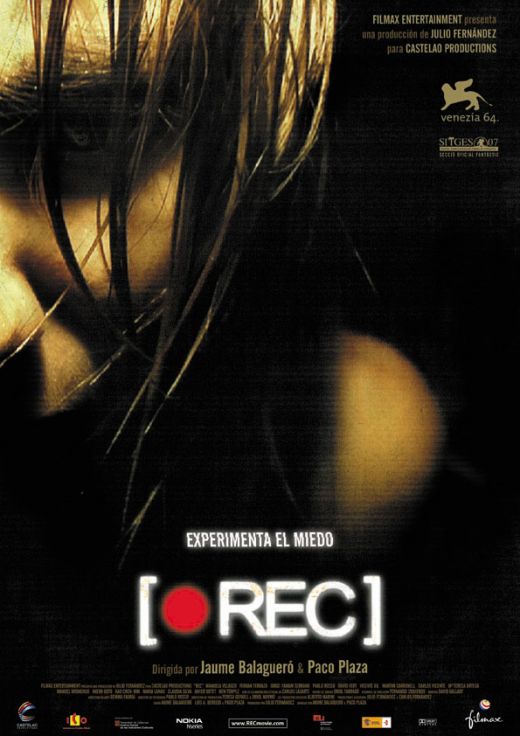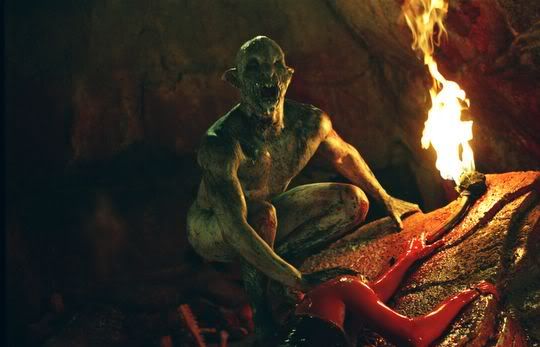-written as an assignment for my Film 131: Narrative Film class for my Masters in Film-
Edward Scissorhands has been one of those
untouchables movies for me, in league with such films as Loch Ness (1996) and
Warriors of Virtue (1997), for its role in shaping my love for films at an
early age. I was five or six then when I
first saw it on VHS and instantly fell in love with it. I remember distinctly
being captivated by the story and the possibility of the existence of a man
with scissors for hands. I recall vividly how and why the film created such a
desire for me to travel to the States as a child—to catch a glimpse of people
with scissors for hands and other peculiarities I imagined existed in that land
so far away. Warm memories from that time usually accompany my recollections of
the film. It is for these very reasons that I usually disdain revisiting such
“classics”, for fear of discovering “flaws”, technical or conceptual as
“taught” me by my years in film theory, in those films I loved so. It was with
a great sense of hesitation then that I took out my copy of the movie that I
bought so long ago for this assignment.
The film that functions as a darkly comic
and slightly demented adult fairy tale still held my attention and admiration
from start to finish. I was so delighted to see the very things that captured
my imagination then—the appearance of a rather interesting character into the
dreariness of everyday reality, the high tragedy of Edward and Kim’s doomed romantic
relationship, and the tragic truth of man’s capacity for inhumanity—hold my
fancy still. The images from the film I surprisingly still remember from the
first time I saw it—the wacky shapes and forms of Edward’s topiary creations,
the cartoonish and exaggerated look of the suburbs and gothic castle, the scene
where Edward surprised everyone by grooming a neighbor’s dog, and most vividly
the image of Kim dancing under the “snow” Edward creates while he was making
his ice sculpture in the garden—are to me now still as beautiful as when I
first beheld them then. I was grateful to realize that indeed Edward
Scissorhands was and is a worthy film upon which I have associated numerous
memories of my childhood with. What is even more interesting is that far from
being disillusioned with the film, the takeaways I have from my years of film
theory in university enrich my love of the film. Now I do not just like the
story because “it’s nice” and “it made me sad but in a good way”, but I
appreciate it now more so as it is an effective fictional narrative that
explores the politics of inclusion-exclusion, the human capacity both for moral
good and inhumanity, and a pleasant visual experience from the beauty and
spectacle of one imagery to the next.
As with all films Tim Burton, his
signature visual eccentricity is apparent in Edward Scissorhands. The images do
not just delight but speak volumes of what the director tried to achieve. The
cartoonish depiction of blood (a gooey hyper-red blob) every time it appears in
a scene serve not just to soften the rating the film might receive for
exhibition then, but also to consciously remind the audience of the artificiality of
what is being shown. Most filmmakers would avoid this effect but Burton, in my
opinion, highlights it even more to drive home what the story essentially is—a fairy tale, a fable. Another notable visual choice shown in the
film is the exaggeration of the look of both the gothic castle and the suburb
below. The gothic castle is so dark and generic that it achieves an effect much
like a cartoon, consistent with other elements of the imagery such as the
portrayal of blood, which dulls the horror a gothic castle might bring and
brings it almost to a mundane sobriety. This dulling of an extreme is then
contrasted with the sickeningly pastel-colored suburbia below, achieving a
hyper reality of what is supposedly mundane and creating an odd but
surprisingly effective contrast with the dulled and sobered up gothic castle.
The visual quality of these two primary settings of the story highlights the
qualities of the characters that come from them. Edward, an extreme and severe
looking creature that comes forth from the gothic castle, longs for nothing but
normalcy and the sense of belonging, while the residents of suburbia, with
nothing special about each individual but the wacky clothes they wear, are
roused by, interested in, and ultimately hateful of the former’s peculiarities.
The lone image of the ordinary-looking and realistically-dressed family of the
Boggs serve not just as a sharp contrast to express visually their difference
from the rest of suburbia but also as the necessary anchor in reality that
helps suspend the audience’s disbelief. The plainness of the Boggs makes it
even easier to fall for, root for, and ultimately be taken up in the budding
romance of Edward and Kim. These images, each a pretty enough picture to savor
every time they grace the screen, serve the narrative and the purpose of the
film exceptionally well.
Ultimately, re-watching Edward
Scissorhands was well worth the internal conflict of my hesitation against
risking ruining my memories of the film as it indeed proves to be a timeless
classic that stands the test both of time and any pretense of “knowing better”.



